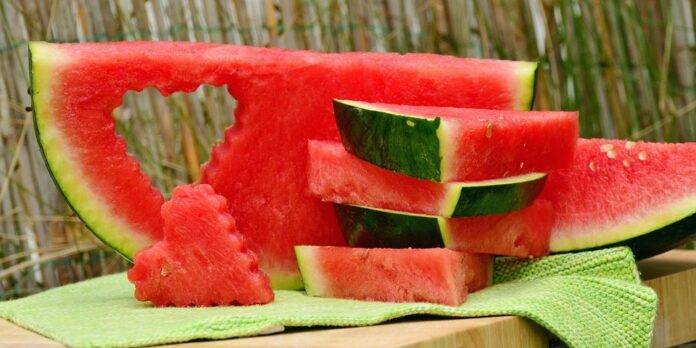Read: The Global Watermelon Industry in 2025 – Market Trends, Challenges, and Future Outlook
Introduction
Watermelon is one of the most popular summer fruits around the globe. Its refreshing taste and high water content make it a favorite for hot days, barbecues, and fruit salads. However, the price of watermelon can fluctuate significantly due to various factors, including supply and demand dynamics, weather patterns, and market trends. This report explores the top 10 watermelon price trends and key market influencers, providing an in-depth analysis of the industry as it stands in 2023.
1. Overview of Watermelon Prices
Historically, watermelon prices vary seasonally, with peaks during the summer months when consumption is at its highest. As of 2023, the average retail price of watermelon in the United States is approximately $0.25 to $0.50 per pound, with wholesale prices ranging from $0.10 to $0.30 per pound depending on the region and season.
2. Seasonal Price Trends
Watermelon prices typically experience a drop during the harvest season, which generally runs from May to September in the U.S. During this period, prices can fall by as much as 30% compared to the winter months. Conversely, during the off-season, prices can spike due to reduced supply, often reaching up to $0.80 per pound.
3. Regional Price Variations
Prices can also differ significantly by region. For instance, in states like Florida and Texas, where watermelons are grown extensively, prices can be lower during peak seasons, averaging around $0.20 per pound. In contrast, in northern states that rely on imports during the summer, prices can be much higher, averaging around $0.60 per pound.
4. Key Market Influencers
Understanding the key influencers that affect watermelon prices is crucial for stakeholders in the industry. Below are some of the most significant factors.
4.1 Weather Conditions
Weather plays a critical role in the production and pricing of watermelons. Excessive rain, drought, or extreme temperatures can lead to reduced yields. For instance, the 2021 drought in California resulted in a 20% loss in watermelon production, which subsequently led to a 15% increase in prices.
4.2 Supply Chain Dynamics
The watermelon supply chain involves several stages, including farming, processing, distribution, and retail. Disruptions in any of these stages—such as transportation delays or labor shortages—can lead to price fluctuations. The COVID-19 pandemic highlighted vulnerabilities in supply chains, causing price spikes due to reduced production and increased transportation costs.
4.3 Consumer Demand
Consumer preferences significantly impact watermelon prices. The trend towards healthier eating has increased the demand for fresh fruits, including watermelon. According to a report by the USDA, watermelon consumption in the U.S. rose by 10% from 2019 to 2022, which naturally affects pricing.
4.4 Import and Export Trends
International trade has a direct impact on local prices. For example, in 2022, the U.S. imported over 200,000 tons of watermelon from Mexico, which helped stabilize prices during the peak season. Conversely, trade restrictions can lead to shortages and increased prices.
5. Price Forecasts
Forecasting the price of watermelons can be challenging, given the many variables involved. However, market analysts predict that prices will stabilize in the coming years, with fluctuations primarily driven by weather and consumer demand. Based on current trends, prices are expected to remain within the range of $0.25 to $0.60 per pound through 2025.
6. Impact of Organic Farming
The rise of organic farming is another key influencer in the watermelon market. Organic watermelons typically command higher prices, often selling for $0.80 to $1.00 per pound. As consumer demand for organic products increases, this segment of the market is expected to grow, potentially leading to higher average prices across the board.
7. Technological Advances in Agriculture
Innovations in agricultural technology, such as precision farming and genetically modified crops, are also influencing watermelon prices. These technologies can lead to higher yields and lower production costs, which may subsequently reduce retail prices. For instance, farms using precision irrigation have reported up to a 30% increase in yield, leading to lower prices for consumers.
8. Case Studies
Analyzing specific case studies can provide insight into how these trends play out in real-world scenarios.
8.1 Case Study: Florida Watermelon Production
Florida is one of the largest producers of watermelons in the U.S. In 2022, Florida produced over 500 million pounds of watermelon, with prices averaging $0.20 per pound during the peak season. However, the state faced challenges due to hurricanes, which disrupted production and led to a temporary price spike of 25% in the following months.
8.2 Case Study: Organic Watermelon Market
The organic watermelon market has seen substantial growth in recent years. In 2022, organic watermelon sales reached over $120 million in the U.S., reflecting a 15% increase from the previous year. This growth has attracted more farmers to switch to organic practices, further influencing market prices.
9. Conclusion
The watermelon market is influenced by various factors, including seasonal trends, regional price variations, weather conditions, supply chain dynamics, consumer demand, and more. As we move into the future, it will be essential for stakeholders to stay informed about these trends to adapt their strategies accordingly.
10. Recommendations for Stakeholders
For farmers, investing in technology and sustainable practices can lead to better yields and more stable prices. Retailers should monitor consumer trends to adjust their offerings and pricing strategies. Finally, policymakers should consider the impact of weather patterns and trade regulations on the market to support the industry effectively.
By understanding these trends and influencers, stakeholders in the watermelon market can make informed decisions that will benefit them in the long run.




